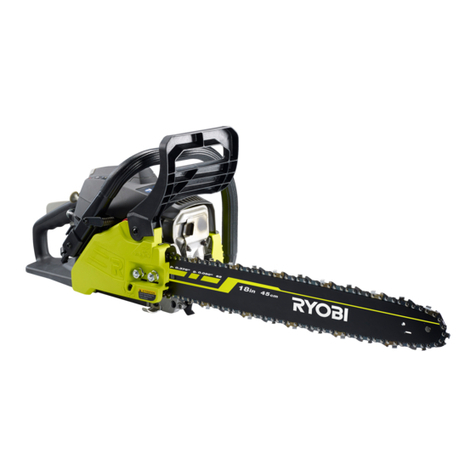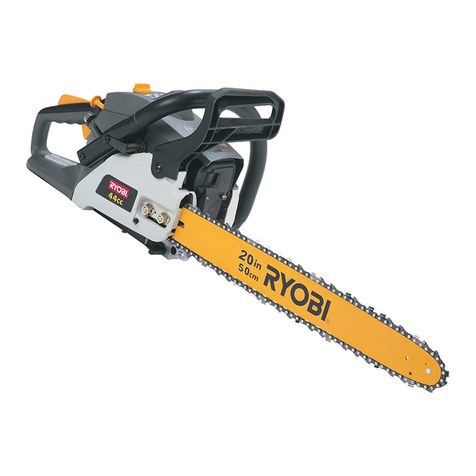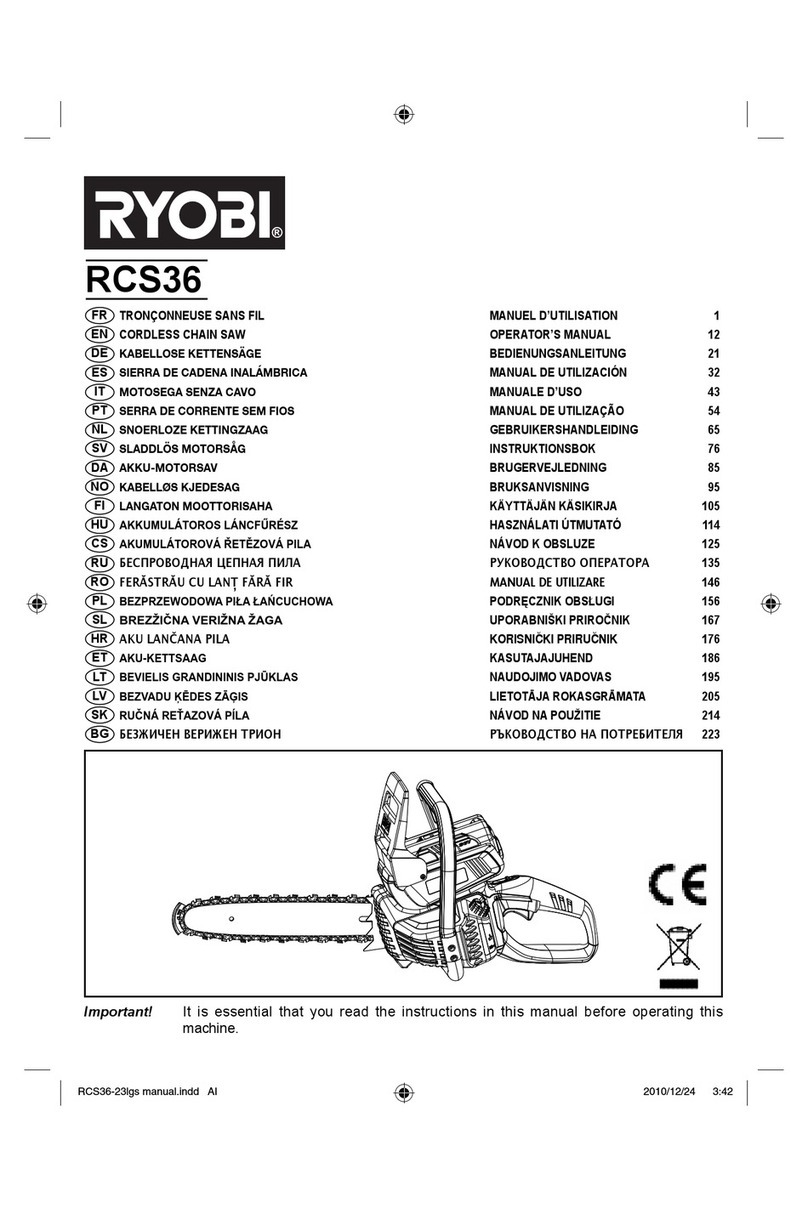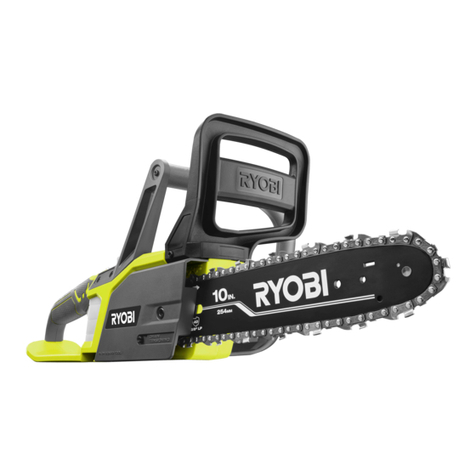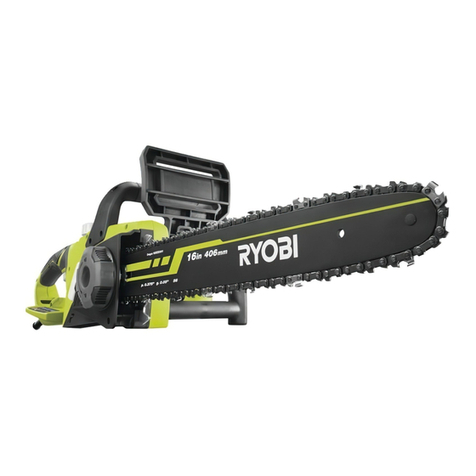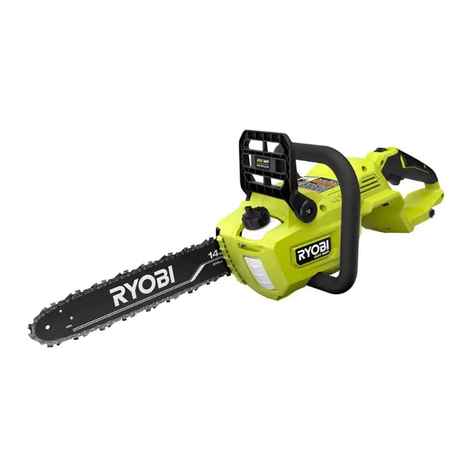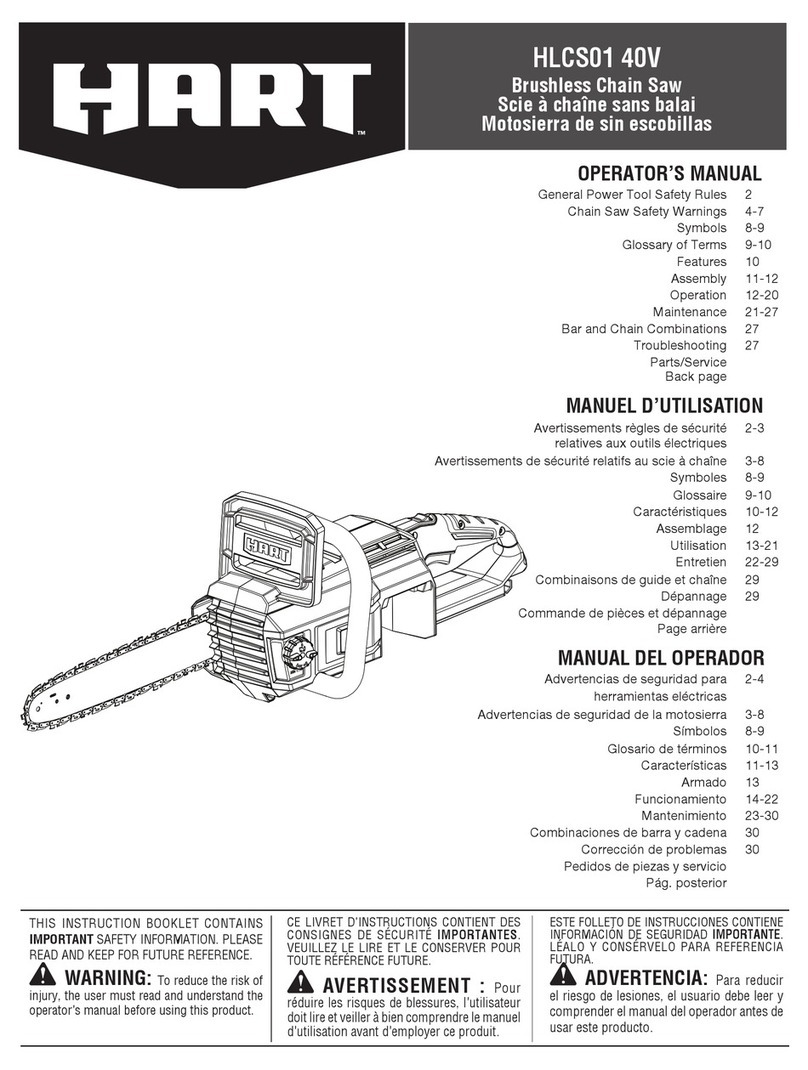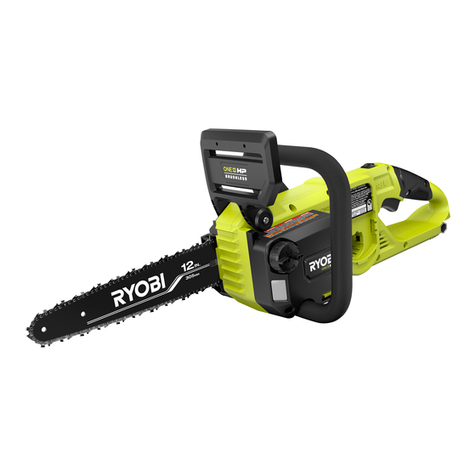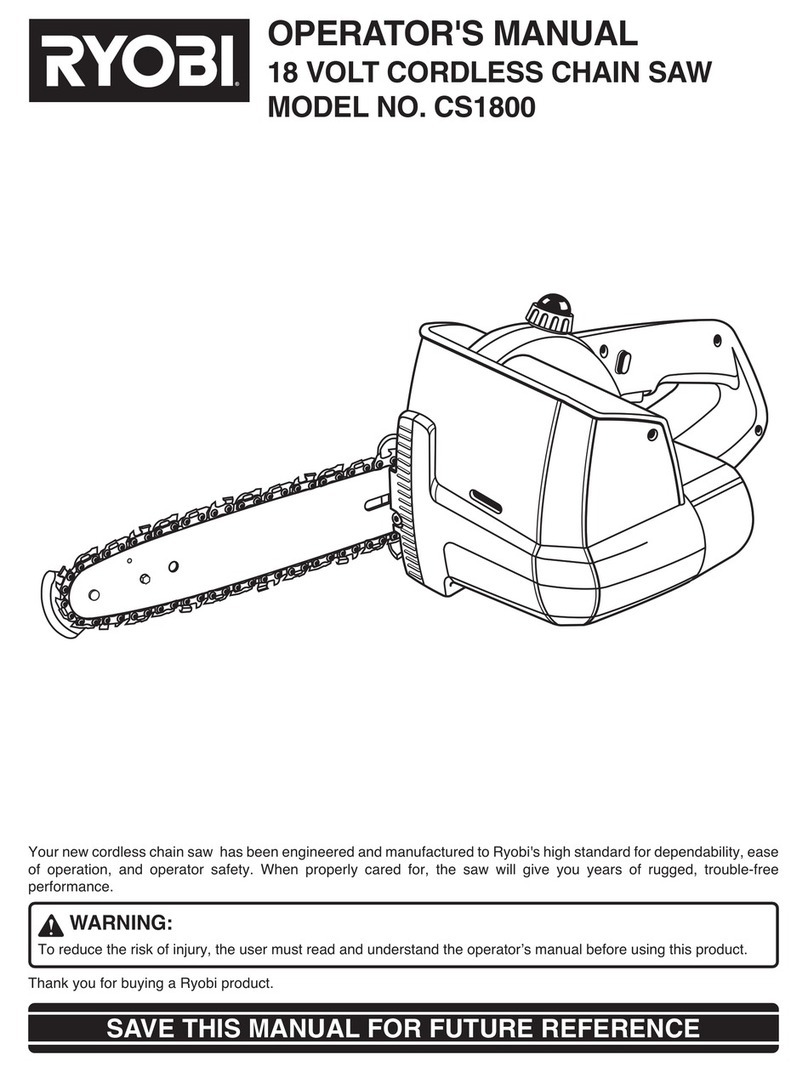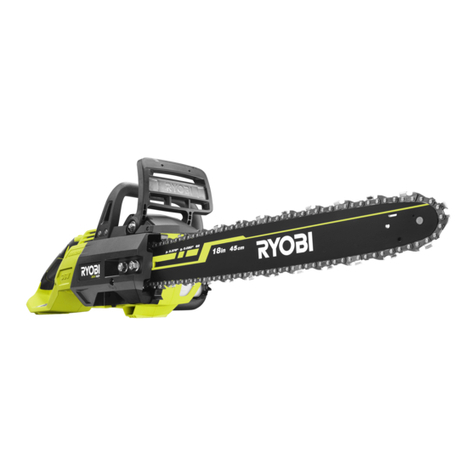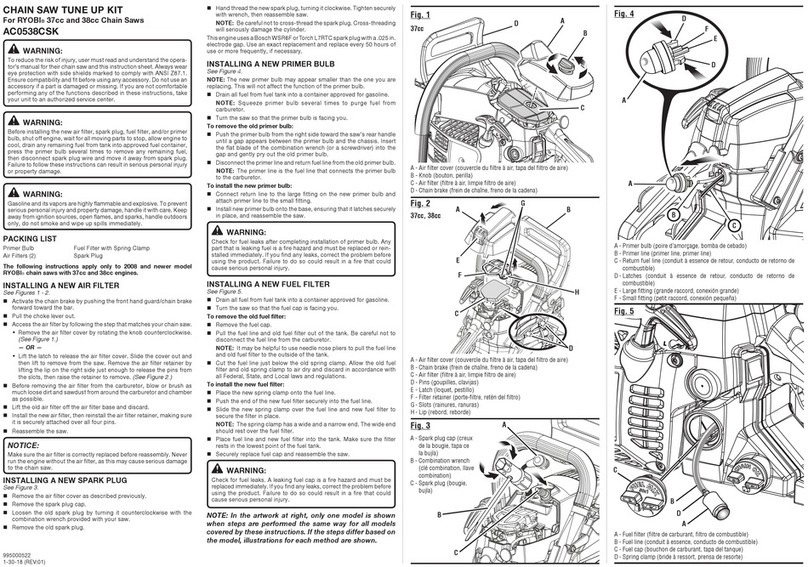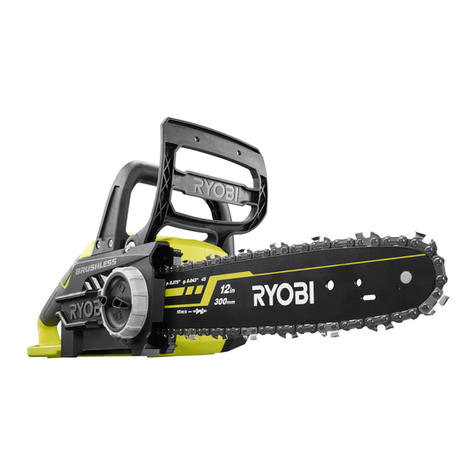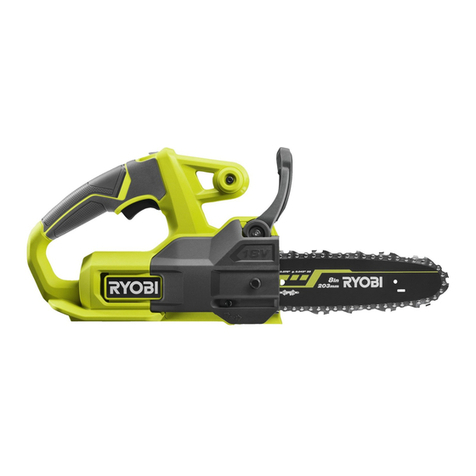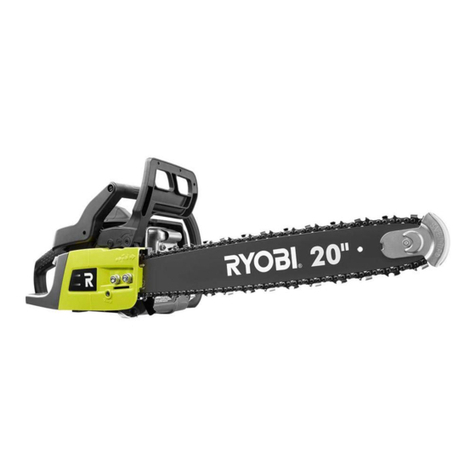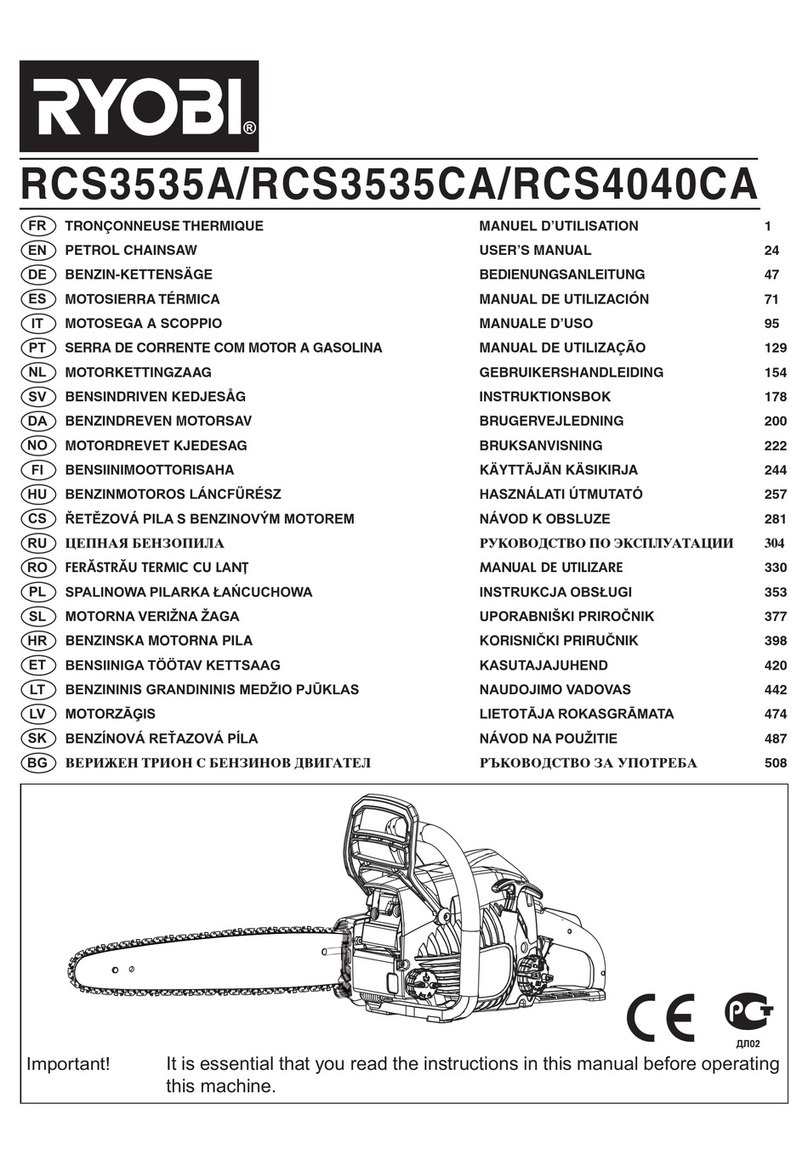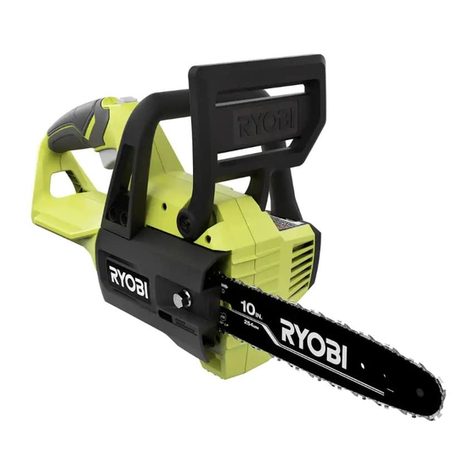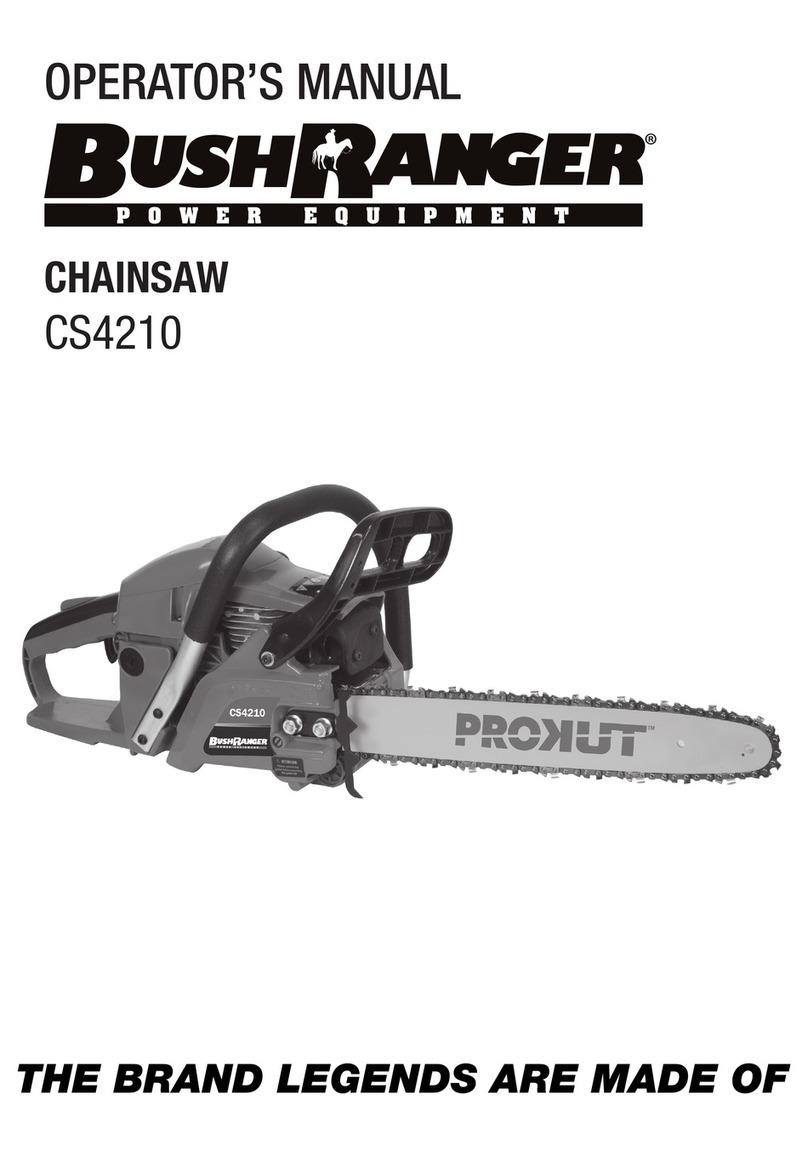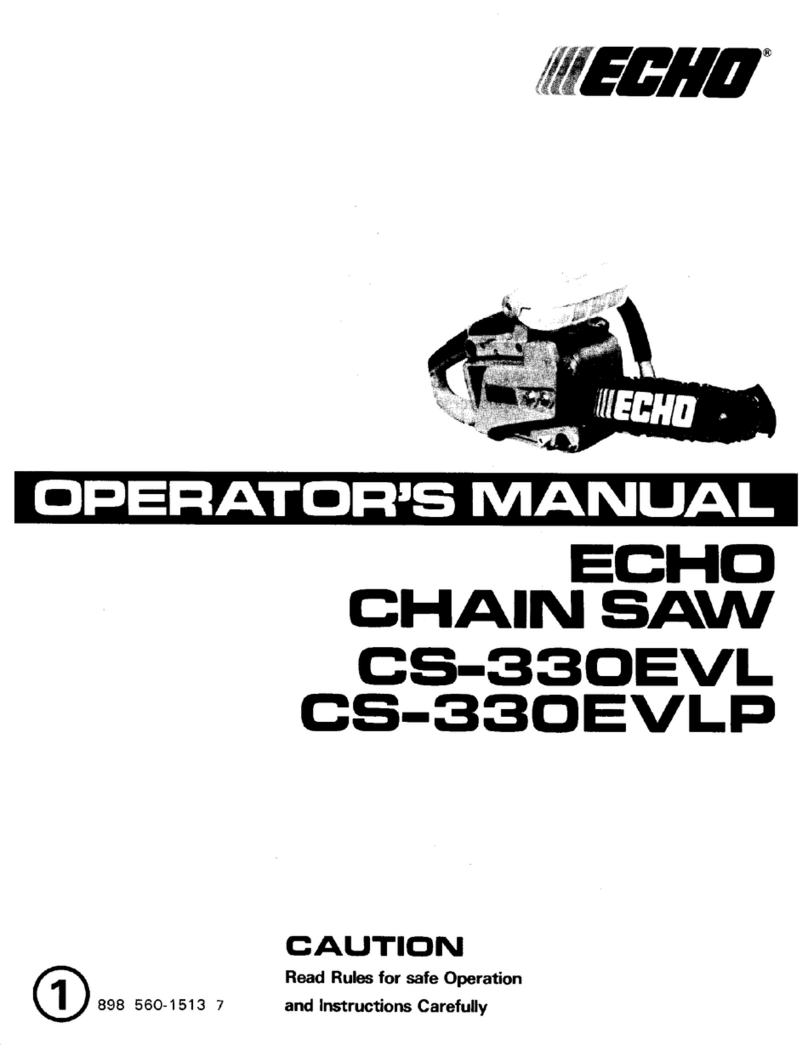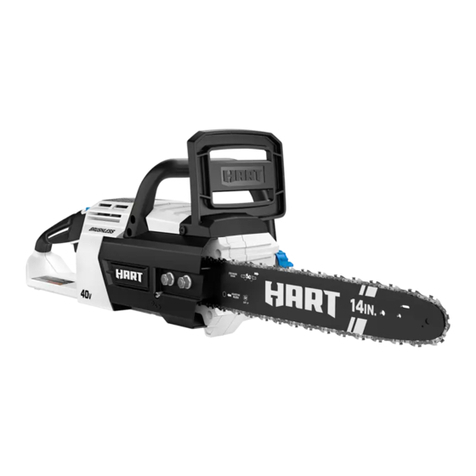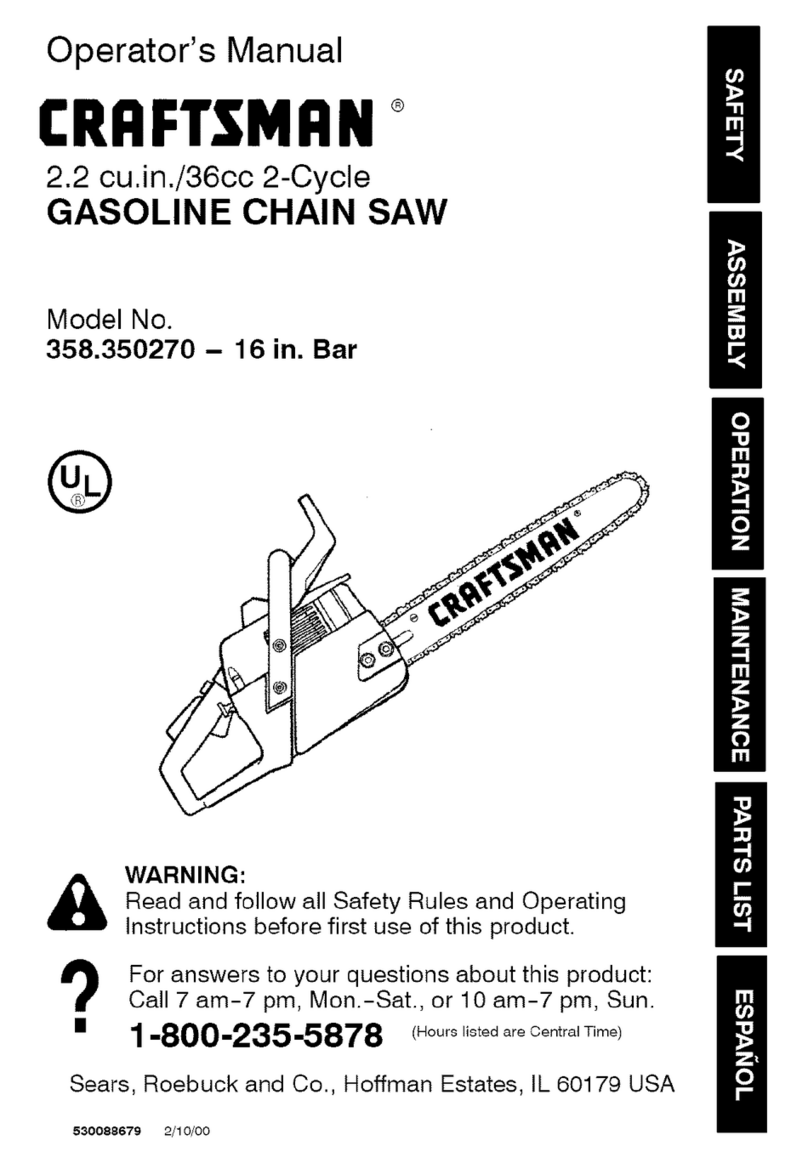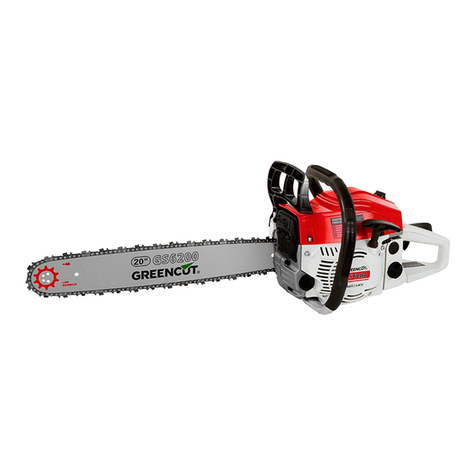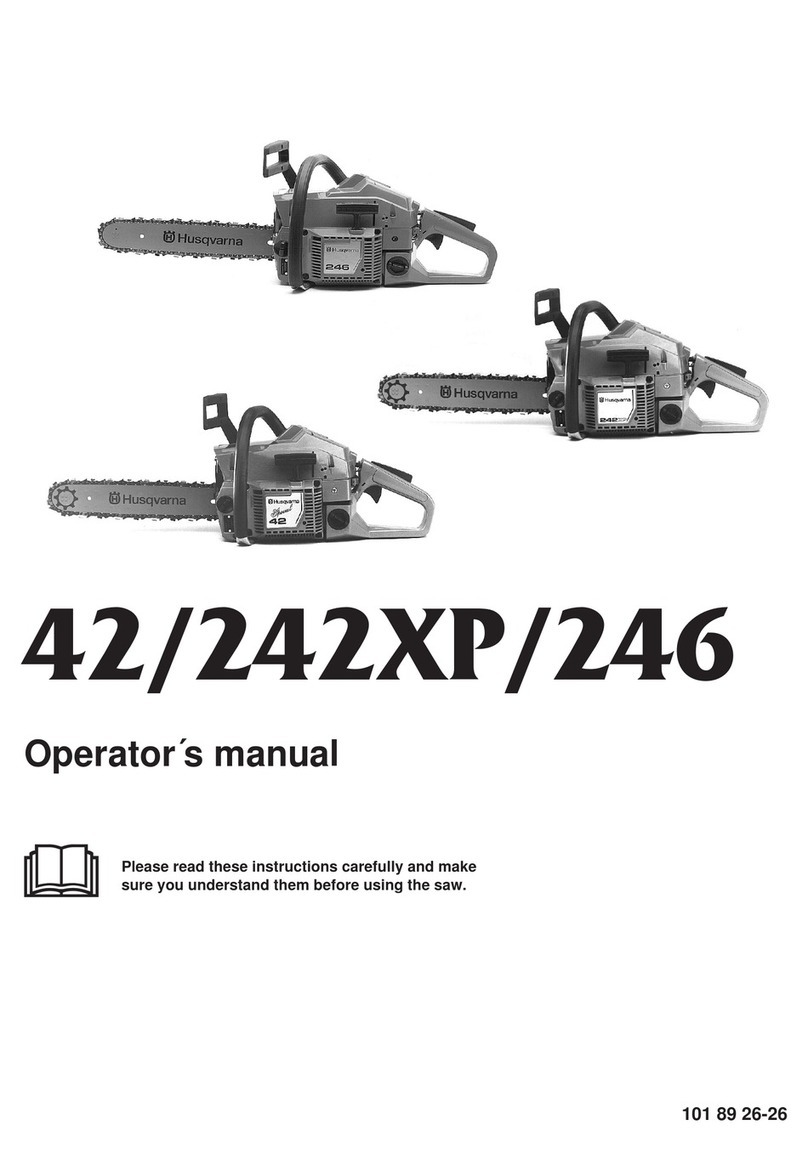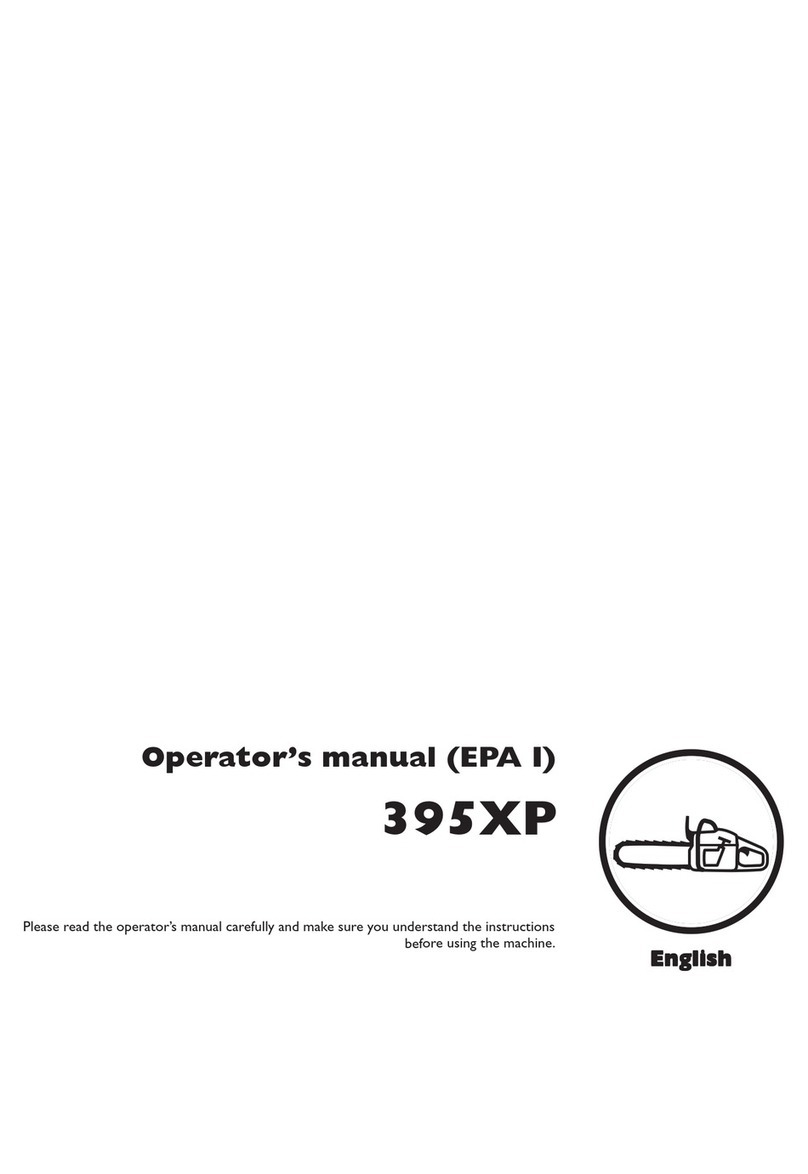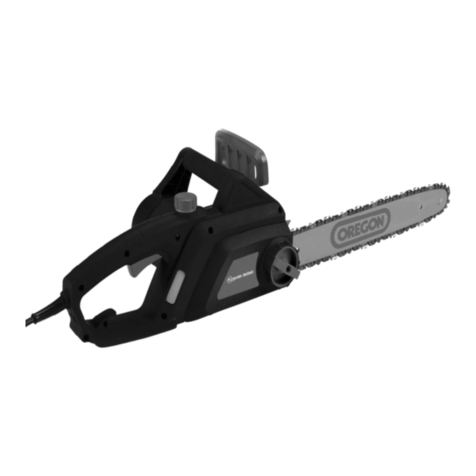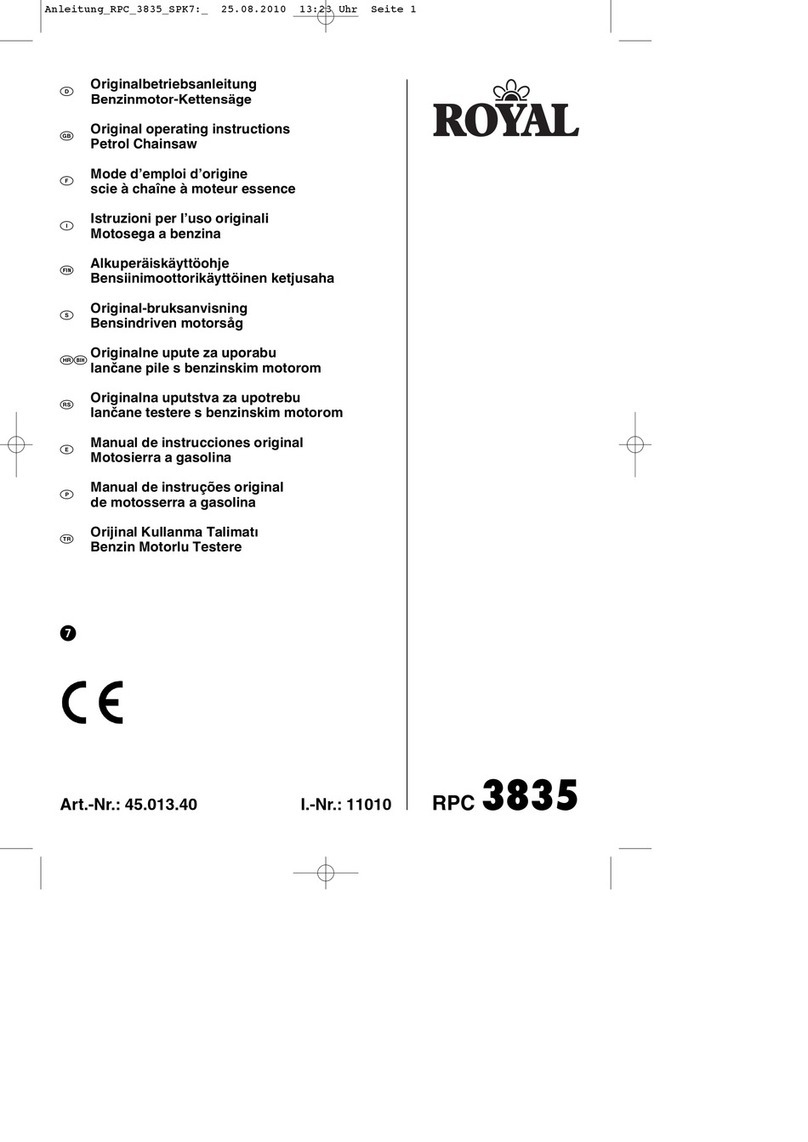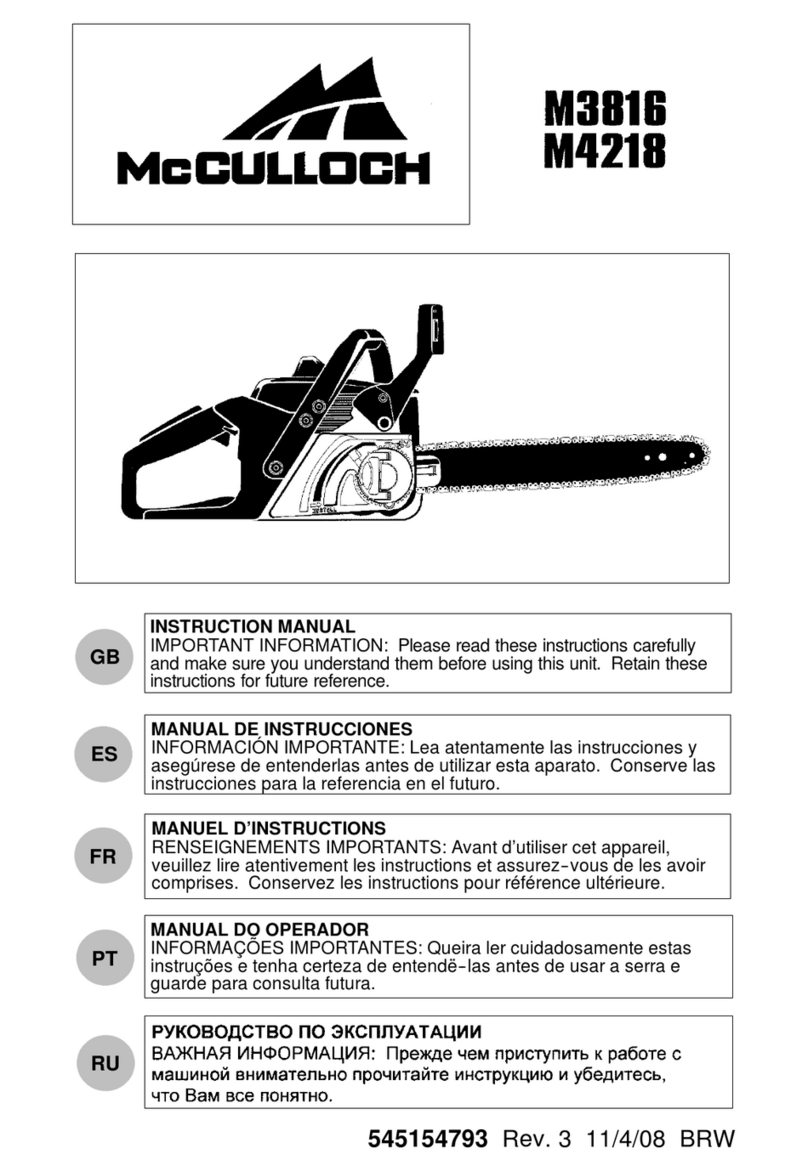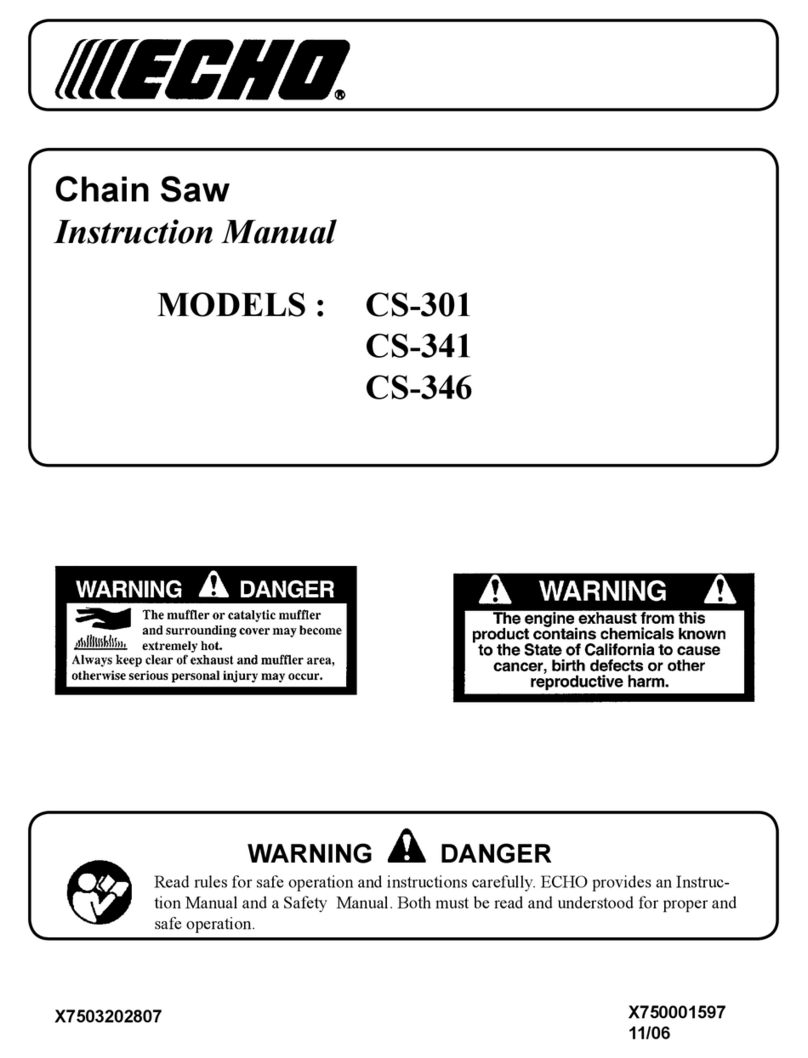2| English
CHAINSAW SAFETY WARNINGS
■Always fit the guide bar cover when the product is not in
use or being carried or transported. This will help reduce
the risk of accidental contact with the sharp blades on
the chain. Carry the product by the top handle with the
guide bar facing away from your body.
■You should get used to your new product by making
simple cuts on securely supported wood. Do this
whenever you have not operated the product for some
time.
■Cut logs on a saw-horse or cradle when operating the
product for the first time.
■Ensure all the guards, handles, and spiked bumper are
properly fitted and are in good condition.
■Persons using the product should be in good health.
The product is heavy, so the operator must be
physically fit. The operator should be alert, have good
vision, mobility, balance, and manual dexterity. If there
is any doubt, do not operate the product.
■Do not stand on any unstable surface while using
the product. This could include, but is not limited, to
ladders, scaffolds, and trees. Keep both hands on the
handles of the product at all times.
■Do not start using the product until you have a clear
work area, secure footing, and a planned retreat path
away from the falling tree.
■Use extreme caution when cutting small-size branches
and sapling because slender material may catch the
saw chain and be whipped toward you or pull you off
balance.
■When cutting a limb under tension, be alert for spring
back so that you will not be struck when the tension in
the wood fibres is released.
■Beware of the emission of exhaust gases, lubricant
mist, and saw dust. Wear a mask or respirator, if
required.
■Do not cut vines and/or small undergrowth (less than
75 mm in diameter).
■Always hold the product with both hands during
operation. Use a firm grip with thumbs and fingers
encircling the handles of the product. Right hand must
be on the rear handle and left hand on the front handle.
■Before starting the engine, make sure the saw chain is
not contacting any object. Always start the product with
the chain brake applied (pushed fully forward).
■Do not modify the product in any way or use it to power
any attachments or devices not recommended by the
manufacturer of the product.
■There should be a first-aid kit containing large wound
dressings and a means to summon attention (e.g.,
whistle) close to the operator. A larger and more
comprehensive kit should be reasonably nearby.
■The operator may be tempted to remove the helmet if
there is no danger of falling objects in the work area, but
the helmet, particularly with the mesh visor, can help
reduce the potential for injury to the face and head if
kickback occurs.
■Wear a helmet at all times when operating the product.
A helmet, equipped with mesh visor, can help reduce
the risk of injury to the face and the head if kickback
occurs.
■An incorrectly tensioned chain can jump off the guide
bar and could result in serious injury or fatality. The
length of the chain depends on the temperature of the
chain and chain wear. Check the tension frequently.
■Keep handles dry, clean, and free from oil and grease.
Greasy and oily handles are slippery, causing loss of
control.
■To reduce the risk of injury associated with contacting
moving parts, always stop the engine, apply chain
brake, and remove the spark plug wire. Make sure all
moving parts have come to a complete stop:
●before leaving the product unattended
●before cleaning or clearing a blockage
●before installing or removing attachments
●before checking, conducting maintenance, or
working on the product
■The size of the work area depends on the job being
performed as well as the size of the tree or work piece
involved. For example, felling a tree requires a larger
work area than making other cuts, i.e., bucking cuts.
The operator needs to be aware and in control of
everything happening in the work area.
■Do not cut with your body in line with the guide bar and
chain. If you experience kickback, this will help prevent
the chain from coming into contact with your head or
body.
■Do not use a back-and-forward sawing motion; let the
chain do the work. Keep the chain sharp and do not try
to push the chain through the cut.
■Do not put pressure on the saw at the end of the cut.
Be ready to take on the weight of the saw as it cuts free
from the wood. Failure to do so could result in possible
serious personal injury.
■Do not stop the saw in the middle of a cutting operation.
Keep the saw running until it is already removed from
the cut.
Personal protective equipment
Good quality personal protective equipment, as used
by professionals, will help reduce the risk of injury to
the operator. The following items should be used when
operating the product:
Safety helmet
–should comply with EN 397 and be CE marked
Hearing protection
–should comply with EN 352-1 and be CE marked
Eye and face protection
–should be CE marked and comply with EN 166 (for
safety glasses) or EN 1731 (for mesh visors)
Gloves
–should comply with EN381-7 and be CE marked
Leg protection (chaps)
–should comply with EN381-5, be CE marked and
provide all-round protection.
Chainsaw safety boots
–should comply with EN ISO 20345:2004 and be

